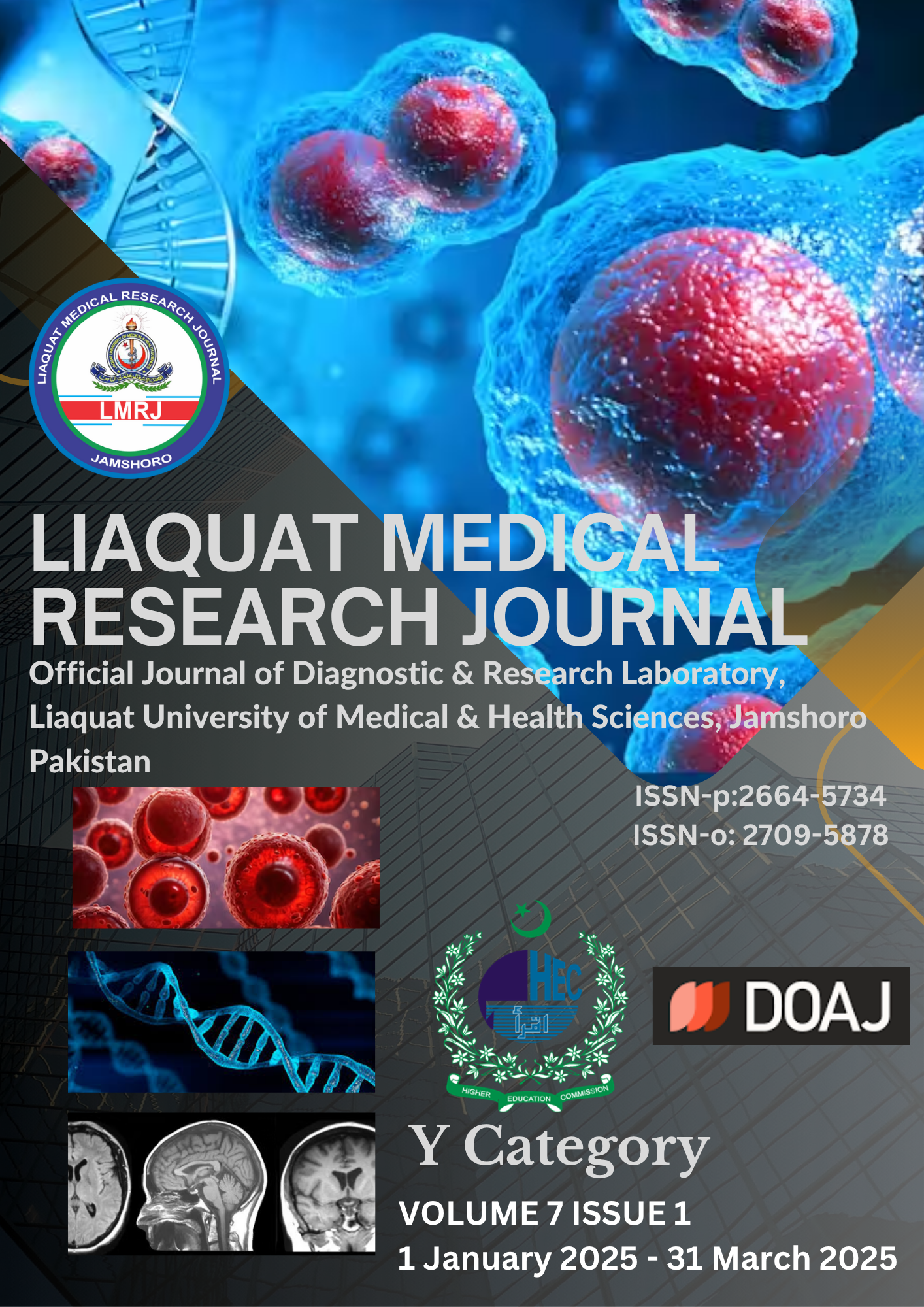B- Lynch suturing in postpartum haemorrhage management and maternal outcome
DOI:
https://doi.org/10.38106/LMRJ.2025.7.1-03Keywords:
maternal outcome. PPH, and B-LYNCHAbstract
Surgical care of atonic Postpartum Hemorrhage (PPH) following medically unsuccessful treatment has recently been documented, involving the application of uterine compression sutures over the whole thickness of both uterine walls. In both developing and developed nations, PPH continues to rank among the top 5 causes of maternal death, out of the reported cases 75% to 90% are caused by uterine atony. This study was aimed to monitor the B Lynch suture's effectiveness in treating PPH. A total of 104 females between age of 20 and 45 years who were experiencing PPH and were between 36 and 42 weeks’ gestation were included in the study. Patients with any bleeding disorders, genital hematomas, conception retirements, ruptured uteruses, and genital injuries were not included. Success criteria were tracked, such as bleeding control within 15 minutes of the surgery. The mean age of females was 27.69 ± 3.68 years. There were two different mean gestational ages: 39.98 ± 1.57 weeks and 40.04 ± 1.68 weeks, with 92.30% success rates. Over 104 women who had postpartum hemorrhages during cesarean sections and who did not respond to conservative treatment were treated with B Lynch suturing, there were only eight (7.69%) patients who failed to respond to this approach and underwent hysterectomy. There were no reported cases of uterine necrosis. Furthermore, two patients were reopened for an abdomen rupture. The results showed that the B-Lynch suture had a good success rate in controlling PPH and improving maternal outcomes. When treating unmanageable postpartum bleeding, B-lynch sutures are a simple, safe, easy, and fertility-preserving procedure.

Downloads
Published
How to Cite
Issue
Section
Categories
License
Copyright (c) 2025 Aysha Jamil , Shahida Mangsi, Majida Ali, Sadif Wager, Mehwish Memon, Mahak Memon

This work is licensed under a Creative Commons Attribution-NonCommercial-NoDerivatives 4.0 International License.
Copyright: Open access journal copyright lies with authors and protected under CC BY-NC-ND 4.0 licence (https://creativecommons.org/licenses/by-nc-nd/4.0/).









